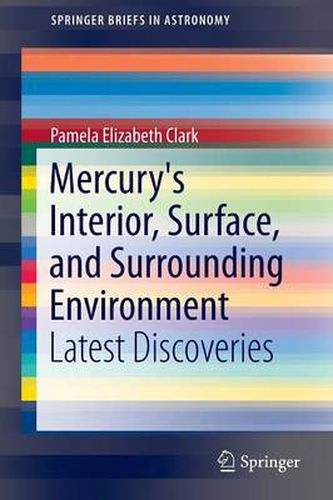Readings Newsletter
Become a Readings Member to make your shopping experience even easier.
Sign in or sign up for free!
You’re not far away from qualifying for FREE standard shipping within Australia
You’ve qualified for FREE standard shipping within Australia
The cart is loading…






This title is printed to order. This book may have been self-published. If so, we cannot guarantee the quality of the content. In the main most books will have gone through the editing process however some may not. We therefore suggest that you be aware of this before ordering this book. If in doubt check either the author or publisher’s details as we are unable to accept any returns unless they are faulty. Please contact us if you have any questions.
This SpringerBrief details the MESSENGER Mission, the findings of which present challenges to widely held conventional views and remaining mysteries surrounding the planet. The work answers the question of why Mercury is so dense, and the implications from geochemical data on its planetary formation. It summarizes imaging and compositional data from the terrestrial planet surface processes and explains the geologic history of Mercury. It also discusses the lack of southern hemisphere coverage.
Our understanding of the planet Mercury has been in a transitional phase over the decades since Mariner 10. The influx of new data from the NASA MESSENGER Mission since it was inserted into the orbit of Mercury in March of 2011 has greatly accelerated that shift. The combined compositional data of relatively high volatiles (S, K), relatively low refractories (Al, Ca), and low crustal iron, combined with an active, partially molten iron rich core, has major implications for Mercury and Solar System formation. From a scientist at NASA Goddard Space Flight Center, this presents a comprehensive overview of the discoveries from the ten-year MESSENGER mission.
$9.00 standard shipping within Australia
FREE standard shipping within Australia for orders over $100.00
Express & International shipping calculated at checkout
This title is printed to order. This book may have been self-published. If so, we cannot guarantee the quality of the content. In the main most books will have gone through the editing process however some may not. We therefore suggest that you be aware of this before ordering this book. If in doubt check either the author or publisher’s details as we are unable to accept any returns unless they are faulty. Please contact us if you have any questions.
This SpringerBrief details the MESSENGER Mission, the findings of which present challenges to widely held conventional views and remaining mysteries surrounding the planet. The work answers the question of why Mercury is so dense, and the implications from geochemical data on its planetary formation. It summarizes imaging and compositional data from the terrestrial planet surface processes and explains the geologic history of Mercury. It also discusses the lack of southern hemisphere coverage.
Our understanding of the planet Mercury has been in a transitional phase over the decades since Mariner 10. The influx of new data from the NASA MESSENGER Mission since it was inserted into the orbit of Mercury in March of 2011 has greatly accelerated that shift. The combined compositional data of relatively high volatiles (S, K), relatively low refractories (Al, Ca), and low crustal iron, combined with an active, partially molten iron rich core, has major implications for Mercury and Solar System formation. From a scientist at NASA Goddard Space Flight Center, this presents a comprehensive overview of the discoveries from the ten-year MESSENGER mission.